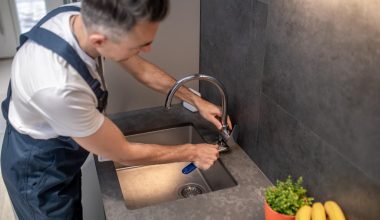 Using Google’s Blogger is a great way to get an attractive, informative website running with a minimal investment: All it takes is your time and effort. However, if you’re interested in maximizing the exposure your site on Blogger receives, you’ll find that some common SEO tactics aren’t very useful – or even possible! Here are some optimization techniques that can have a terrific positive impact on your blog’s search engine ranking.
Using Google’s Blogger is a great way to get an attractive, informative website running with a minimal investment: All it takes is your time and effort. However, if you’re interested in maximizing the exposure your site on Blogger receives, you’ll find that some common SEO tactics aren’t very useful – or even possible! Here are some optimization techniques that can have a terrific positive impact on your blog’s search engine ranking.
1. Hand-Crafted Meta Tags.
Meta tags are used to generate the preview snippet that appears under each page’s listing on a search engine results page. Like most web design software, the Blogger interface will create a meta tag automatically when you write a post. This is great, but you want more control over your Meta tags. Write up your own tags with two goals in mind: You want to include your keywords, and you want your results page preview to be informative and tempting.
[adsenseyu1]
2. Community.
You can get offsite links and draw in more traffic by becoming an active part of the Blogger community. Visit other blogs that address subjects similar to your own. Follow them regularly and get to know the bloggers. If you establish good relationships, ask to exchange blogroll links with other Blogger users.
3. Comment.
Working hand-in-hand with your exploration of the Blogger world, don’t be afraid to speak up and leave comments. You want to include links back to your site in your comments. You have to provide more than just a link, though! Say something worthwhile in your comment, too. If you happen to have a post on your own site that addresses the topic at hand, feel free to link to it directly.
4. Directory Listing.
There are still sites out there that concentrate on collecting links and categorizing them in subject-specific directories. Although they’re not as important as offsite links from sites with direct visitor activity, directory links can still make a positive contribution to your search engine ranking. Submit your Blogger site to every directory you can find.
[adsenseyu1]
5. Hack your Titles.
With Blogger’s default setup, the name of your blog will always be listed at the top of each page in great big letters. The problem is that this is achieved using the H1 tag. The H1 tag is prime SEO real estate; you want the specific title of your post (including keywords) there, not your blog’s name! Fortunately, this can be changed with a little HTML tweaking. Do a Google search for “blogger title tag hack” to get tutorials and the necessary markup language.
6. Eschew Drop-Down Menus.
You have a range of options when it comes to setting up navigation on your Blogger site. Drop-down menus may be tempting, due to their compact size and ease of use. Restrain yourself and stick with a more conventional text menu. Using drop-down menus robs you of a lot of potential SEO real estate. Keywords in a standard text menu will be picked up when the search engines index your site; drop-down menu keywords will not be.
7. Keep the Archive Simple.
In the same way that boring is better for navigation menus, you don’t want to get too fancy with your archives. Don’t employ any of the shiny archive widgets available to make your archive links look better. Stick with the default chronological list. The reasoning here is the same as with your menus: Fancy gadgets tend to deprive you of useful text links that could have keywords in them.
Blogger is a platform that allows you to put together outstanding websites without spending a dime. A blogger site can also be a strong search engine performer if you know how to adapt your SEO work to fit the platform. The tips presented above will get you off to a great start!








